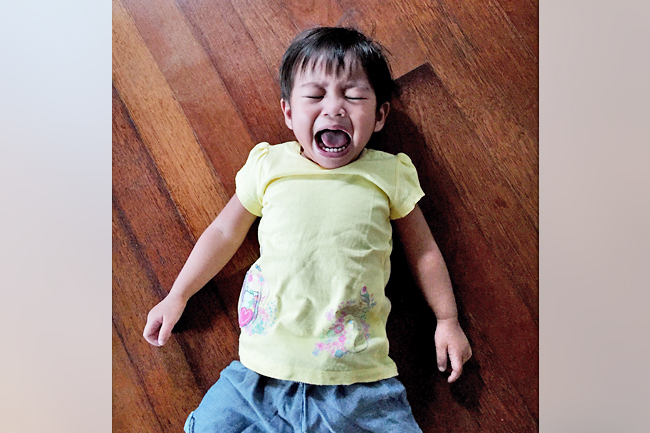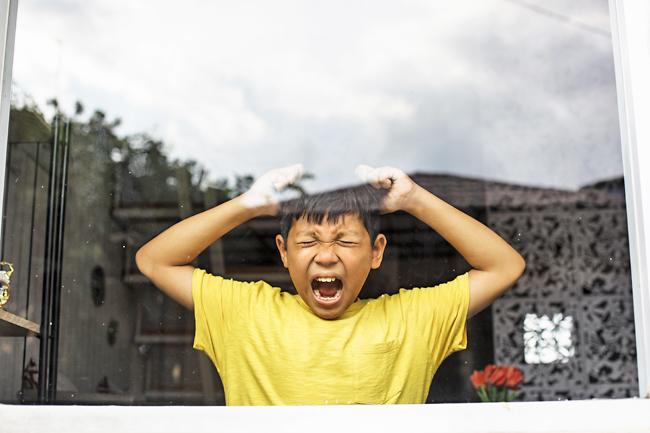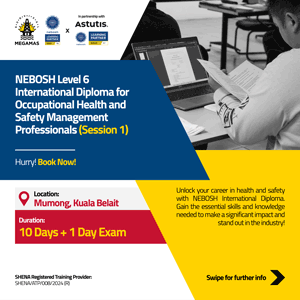ANN/THE STAR – As a parent, you’re likely familiar with temper tantrums, but have you ever witnessed a child having a meltdown?
Meltdowns are more commonly experienced by autistic individuals, and for those unfamiliar with the distinction, it can be challenging to tell them apart from tantrums. Unlike tantrums, meltdowns are intense, involuntary responses to overwhelming situations that cause a loss of control over behaviour.
Autistic individuals of any age – not just children – can experience meltdowns. It’s important to understand that meltdowns are not acts of bad behaviour, manipulation, or a result of poor parenting.
As autistic persons often struggle with communication difficulties, sensory differences and emotional regulation, they are more susceptible to meltdowns.
It is important for everyone, not just parents, to understand what a meltdown is.
Meltdowns are incredibly taxing both mentally and physically, and are one of the most misunderstood parts of the autistic experience.
In children, they are often confused with tantrums.




Meltdowns are:
– An overwhelming emotional response that lasts longer than normal
– Can occur at any age
– Beyond one’s control
– Does not require an audience
– Triggered by sensory/emotional overload
– Unable to distract or redirect the child.
Meanwhile, tantrums are:
– A typical emotional behaviour
– Common in toddlers and young children
– Driven by one’s will/motivation
– Seeks attention and requires an audience
– Related to not getting their way or being told “no”
– Child can be distracted or redirected to something else.
MELTDOWN TRIGGERS
The occurrence of a meltdown is a diverse experience that holds a different meaning for different autistic individuals, but here are some of the common triggers:
Sensory overload, for example due to strong smell or taste, loud noises, flickering lights, being in a crowd, etc.
Changes in routine, life or environment, for instance moving to a new house, sudden changes in school schedule
CHALLENGES IN COMMUNICATION
Anxiety or stress
Loss of autonomy (choice and control).
Here are some behaviours that may be shown during a meltdown:
– Biting
– Hitting or punching
– Kicking or foot-stomping
– Running off (eloping)
– Stimming (ie self-stimulatory behaviours used by an autistic person as a calming method, for example rocking, humming, finger flicking)
– Self-injury, such as banging their head, hitting themselves or pulling their own hair
– Throwing and breaking objects
– Vocal outbursts, like crying, sobbing, yelling, name-calling or intense screaming
– Zoning out.
ANTICIPATING A MELTDOWN
If you are supporting an autistic child, it is important to learn to anticipate a meltdown.
Recognise triggers
Whenever a meltdown happens, take note of the possible triggers – patterns may emerge.
Once you have identified your child’s trigger, find ways to avoid or minimise it.
Keep an eye on early signs
Before a full-on meltdown, an autistic child may show signs of distress, eg biting nails, covering ears with hands, irritability, stimming.
Take steps to remove the cause or move the child to a calmer environment.
Prepare sensory aids/self-soothing tools, for example sensory toys, a weighted vest/blanket, sunglasses, noise-cancelling headphones, “chewy tops” for pens/pencils, etc.
These can help to comfort and calm them during difficult situations.
Plan and practise coping strategies
Develop suitable strategies that your child can follow whenever they start to feel overwhelmed or stressed. Practise with your child when they are calm so that they can self-advocate and apply these strategies when needed.
DURING A MELTDOWN
The key is co-regulation. A child needs to first learn how to regulate with others before he or she is able to use the regulation tools independently.
Frequent co-regulation is a process that leads to self-regulation.
Stay calm
Before we can invite them into our calm, we need to self-regulate and be calm ourselves first. Focus on taking deep breaths and consider sipping some water.
Reframe the behaviour
Remind ourselves that the child is struggling and the meltdown was not intentional.
Give them space
Don’t try to stop their behaviour, but stay nearby to ensure their safety.
Keep other people away.
DECREASE STIMULATION
Limit talking as this will add further stress.
Adjust the environment
Look around and see what can be done to help your child calm down, such as turning down the light or music, closing a door, asking others to leave the room.
Find a safe space
If it is possible or if there is a risk of injury, try to guide them to a safe, quiet room.
Use the preferred calming method
If you know something that can calm your child during a meltdown, offer it. This may be a favourite toy, playing a piece of calming music, deep breathing, punching pillows, rubbing their back or tight hugs. – Dr Zahilah Filzah Zulkifli






